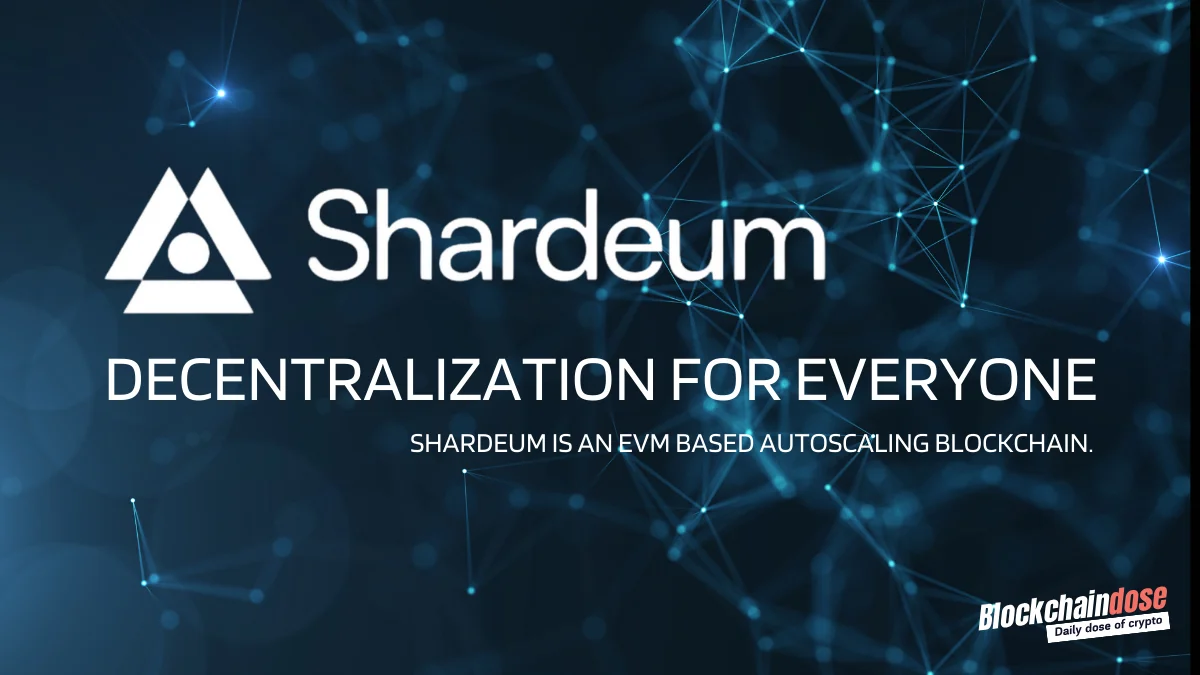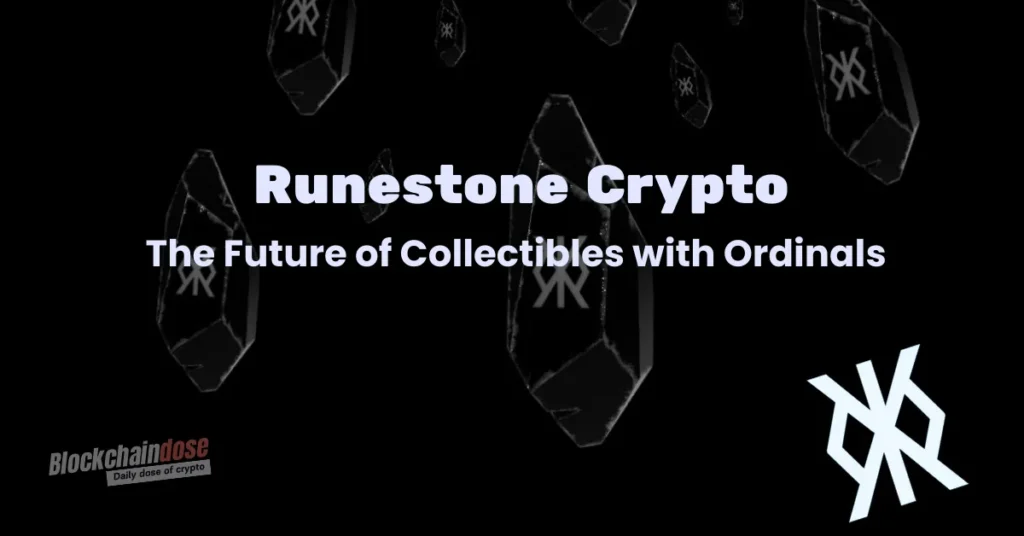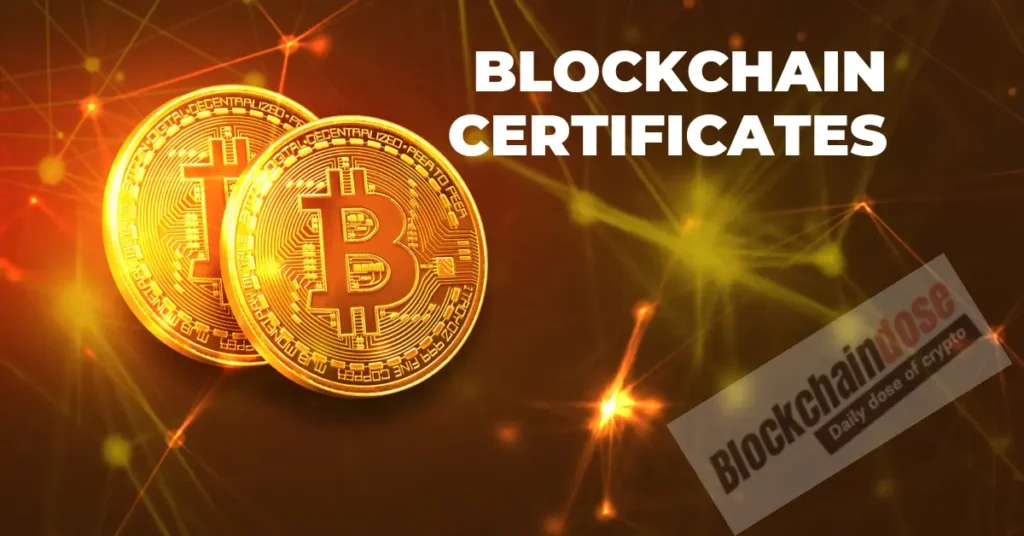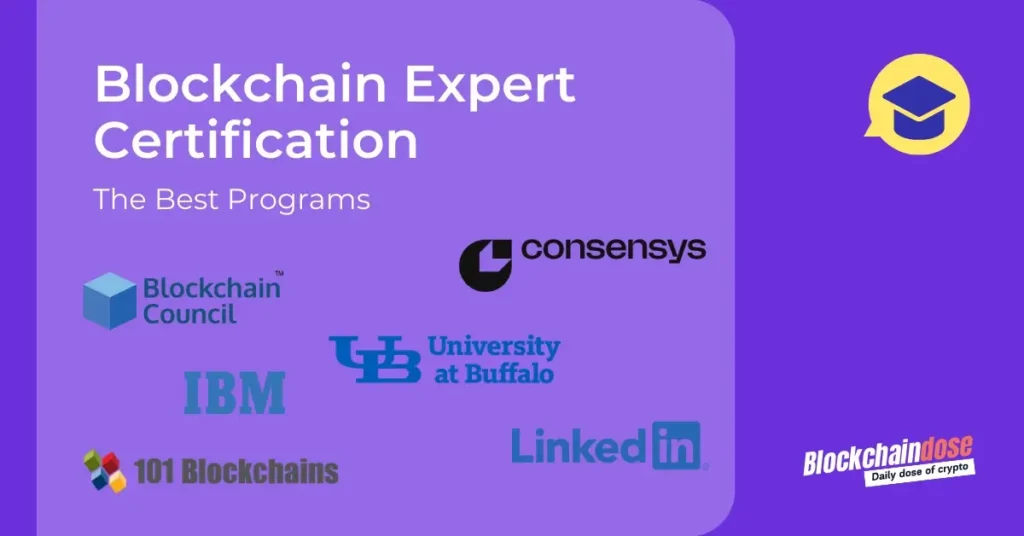One of the biggest problems clouding the world of blockchain technology is the lack of scalability. Super large blockchain networks like Ethereum and Bitcoin suffer serious scalability issues, which seem to increase with new tokens and projects. However, the Shardeum blockchain is bringing a new solution to blockchain scalability.
Key Takeaways:
- Shardeum is a blockchain network designed specially to address the blockchain issue of scalability.
- In early 2025, Shardeum saw massive adoption in Dapp development.
- Under the Shardeum umbrella is a native Shardeum coin, popularly called Shards, with the ticker symbol $SHM.
- The requirements for running a self-hosted Shardeum node are quite minimal.
What is Shardeum Blockchain?
Shardeum introduces itself as an EVM-compatible blockchain network fashioned to deliver exceptional scalability through autoscaling. The name, ‘Shardeum,’ stems from the word ‘shard,’ which directly relates to the concept of sharding.
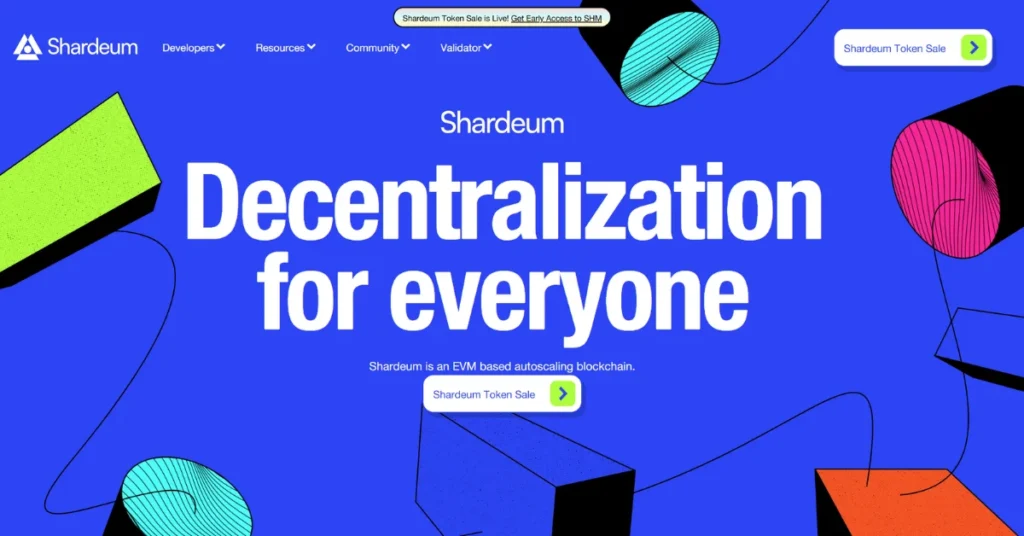
Sharding is the intensive and complex process of splitting a database into even smaller databases or servers, known as shards. This concept was born out of the need to boost performance, accelerate speed, and bolster scalability in systems.
Based on this rock-solid foundation, Shardeum’s fundamental goal was to embrace scalability. Its scaling mechanism completely relies on the sharding model.
The brainchild of Omar Syed and Nischal Shetty, with the latter serving as president, this project arises from a shared vision. Thanks to sharding, Shardeum will seamlessly scale, increasing the transactions per second (TPS) as more validators hop on board. Furthermore, the transaction gas fees remain low due to sharding.
As it is locked down to security and decentralization, Shardeum will blend Proof of Stake with Proof of Quorum. This combination offers both power and precision.
Shardeum: Addressing The Blockchain Trilemma
The blockchain space is constantly wrestling with what is popularly known as the Blockchain trilemma, which involves balancing scalability, Security, and decentralization. Chasing one often comes at the cost of the other. For instance, while trying to balance scalability, most blockchains end up compromising on decentralization and Security. The case is the same for other attributes.
Most tech enthusiasts will agree that striking a perfect balance between these three elements is the blueprint for blockchain adoption. If crypto is ever to be truly accepted by institutions like banks, addressing the trilemma is key.
Here’s how Shardeum claims to crack the code:
Scalability
Shardeum prides itself on being one of the most scalable blockchains in existence. It adopts a technique called dynamic state sharding, which allows the Shardeum blockchain to reach consensus at the transaction level. Thanks to parallel processing, users and investors will benefit from lightning-fast speeds and ultra-low fees.
Security
By blending Proof of Stake and Proof of Quorum, the Shardeum network brings Security like a fortress. Security is not merely a checkbox—it’s the cornerstone of Shardeum’s design. This hybrid consensus mechanism and a preset auto-rotation system ensure you always have fresh and trustworthy validators.
Decentralization
Shardeum is fully permissionless and community-powered. Anyone can run a node and help ramp up TPS—no gatekeeping, no barriers—just an open door for everyone to participate.
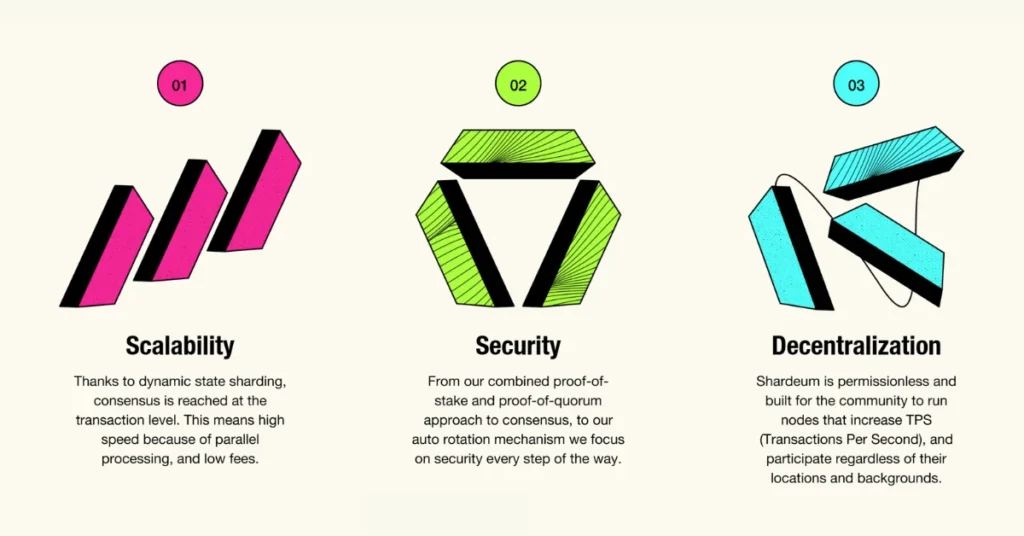
Shardeum: The Numbers
On the Shardeum homepage, you can see a snapshot of its momentum. As of March 15th, the Shardeum network already supports over 150 active projects, evidence of the network’s growth and its blistering expansion.
Over 160,000 public validators have already joined the fray. The community has crossed the 1.4 million mark, while active accounts have topped 1.2 million. So far, Shardeum has successfully handled 81+ million transactions, which speaks volumes about its surging adoption.
Shardeum Coin: SHM
Within the Shardeum network is a primary coin named SHARD, with the ticker symbol $SHM. The coin plays a major role in almost everything happening within the Shardeum network.
For starters, SHM is the medium of exchange of the Shardeum blockchain network. This means it’s the one primarily used to pay for services delivered.
Beyond its role as a currency, SHM is also a vital asset since it can be staked and even traded in various exchanges and networks. The team also detailed the SHM tokenomics blueprint.
Finally, SHM is the coin that rewards network contributors who validate blocks and maintain the chain.
The initial token supply is capped at 249 million tokens. Here’s the breakdown:
- 36.72% (91.44M) sold with a 3-month cliff and a 2-year linear vesting
- 30.6% (76.2M) goes to the Shardeum team
- 22.44% (55.88M) allocated to the foundation
- 10.23% distributed via airdrops and ecosystem events, unlocked at TGE (Token Generation Event)
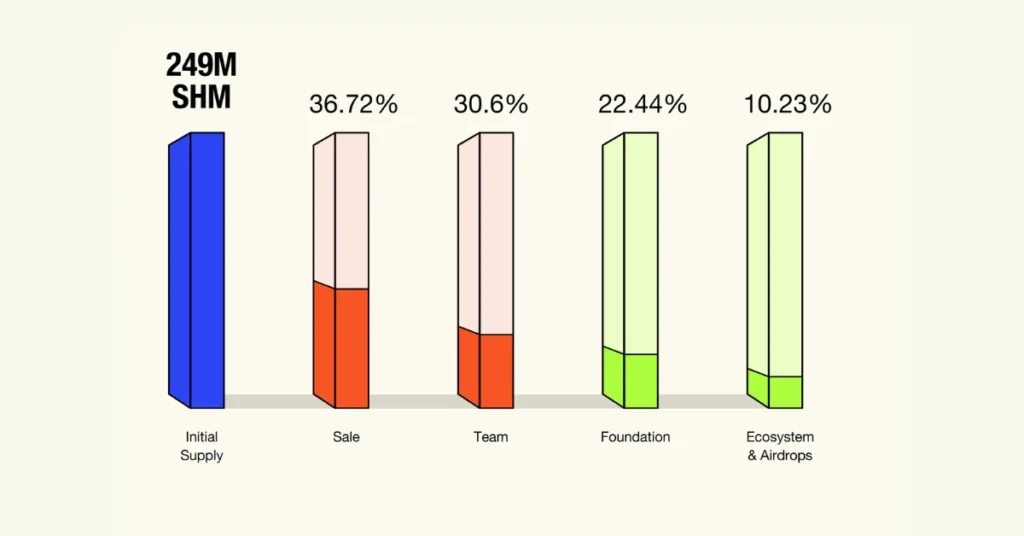
Originally, Shardeum had capped about 251 million tokens to reward validators. However, more recently, Shardeum switched to a more dynamic model. In general, additional tokens are minted to reward validators.
Furthermore, 100% of the fees collected through the Shardeum chain are burnt. This means no transaction fees are used to reward validators.
How to Buy Shardeum Coin ($SHM)
While the Shardeum coin ($SHM) seems to have massive potential, it has yet to be listed in any exchanges for purchasing or trading. However, you can still purchase it.
As of March 19th, the Shardeum Coin sale was already live, opening an opportunity for willing investors. In this early contributors tier, the price ranges between 0.71 and 0.66 USDC for general and validator SHM purchases, respectively.
Later, on March 28th, the token sale for the second group of early contributors to the network also began. Here, the token is going for 0.9 and 0.83, respectively. The minimum and maximum purchase amounts are 500 USDC and 10,000 USDC, respectively.
Shardeum will run the SHM token sale around till April 14th. Afterward, the Token generation event and distribution will commence.
Current Milestones
Further Development
According to its whitepaper, one of Shardeum’s biggest achievements was the code freeze completed in December 2024. This marked the final phase before launching the mainnet, expected in Q1 2025, complete with validator support.
In Q2 2025, the team began rolling out the EVM-compatible testnet, which enables smart contracts. The full-scale testnet is set to go live in Q3, with scaling upgrades scheduled for Q4.
Security
Shardeum remains committed to safety. That’s why the team plans to conduct internal and third-party audits of its codebase.
Since December 2024, two bug bounty programs have been launched, with nearly $950,000 in rewards. A third bounty campaign is planned before the mainnet launch.
Marketing
Marketing isn’t just a checkbox for Shardeum—it’s a priority pillar. The network has already made waves in Asia, but now it’s setting its sights on global domination.
Expect conferences, webinars, Ask Me Anything (AMA) sessions, educational content, and real-time feedback loops aimed at growing an international user base.
Partnerships
Shardeum is pursuing partnerships across both Web2 and Web3 landscapes to expand its ecosystem. From wallets and Layer 0s to oracles and bridges, the goal is to create a tightly integrated environment.
In short, they’re building a blockchain that works well with others—a collaborative effort to unlock the true power of decentralization.
Running Nodes on Shardeum Blockchain
Running a node within the Shardeum Blockchain network is a good way for validators to earn strong income from SHM coins. But how really can you run a node?
Shardeum provides three alternatives for persons wanting to become validators. They include:
- Self-host
- 1-Click Install
- Cloud Service providers
Requirements For Self-Host Validators
What will you need?
Before you begin, make sure your machine has:
- 250 GB SSD
- Quad-core CPU (or Dual-core if using a modern server)
- 16 GB RAM (or 8 GB + 8 GB virtual memory)
- A stable internet connection
- You must also own at least 2400 SHM to run a node
After acquiring the above, you must follow the steps in the Shardeum article to begin working as a self-host validator for the network. Your rewards are minted as you continue validating and releasing new tokens.
1 Click Install
The setup process for a 1-click node is quite short and involves:
- Choose your service provider
- Create an account
- Complete the payments and activate the node
- Begin validating
Cloud Service Providers
You can also enjoy services from cloud service providers. Shardeum gives a detailed guide of cloud service providers that one could use, including:
- AWS
- Digital Ocean
- Contabo
- Google Cloud Platform
Why Shardeum Might Be the Future of Scalable Blockchains
Shardeum isn’t just another blockchain project with big promises. It delivers real results. Its dynamic state sharding, low validator requirements, and hybrid consensus model put it miles ahead of many competitors still stuck solving basic trilemma challenges.
As more Dapps move to Shardeum and new developers onboard daily, this network could easily become a favorite among Web3 builders. And with support for EVM smart contracts, Shardeum provides a familiar ground for Solidity developers, reducing the learning curve.
Final Thoughts
The scalability problem has plagued blockchains for years. Ethereum gas wars and Bitcoin transaction delays are just symptoms of deeper limitations. But Shardeum offers something refreshingly different—a real chance to scale without sacrificing security or decentralization.
Whether you’re a developer building Dapps, a crypto enthusiast looking to earn through staking, or an investor eyeing a solid long-term project, Shardeum deserves a spot on your radar. Its growth isn’t just hype—it’s built on a solid, scalable foundation.
As the mainnet launch approaches and global adoption rises, the big question is: Will Shardeum be the blockchain that finally breaks the scalability barrier? Only time will tell—but it’s certainly off to a blazing start.
